Quick Read
Explore the Flipkart business model in this comprehensive case study. Understand how Flipkart’s innovative approach to e-commerce drives its success in the Indian market and beyond.
Learn From Asia’s #1
Digital Marketing Institute
AI-Based Curriculum
Dive in to the future with the latest AI tools
Placement at top brands and agencies


 & more...
& more...

Last time we uncovered the business model of KFC. This time we’ll divert our focus to the business model of Flipkart,a leading e-commerce platforms, offering a wide range of products.
Flipkart isn’t just another online store – it’s a household name in India, synonymous with online shopping. Launched in 2007 as an online bookstore, they’ve grown into a giant, offering various products across all categories.
This case study of Flipkart will help you dive deep into it’s secret sauce of success. In this blog, we will explore the Business Model of Flipkart and its Marketing Strategy. As you study further you will review its market shares, product offering, pricing model, promotional/marketing strategy, and competitor analysis of Flipkart.
By the end of this case study, you’ll understand how Flipkart revolutionised online shopping in India and became the e-commerce leader it is today.
About Flipkart

Source: Google
Founded in 2007 by Sachin Bansal and Binny Bansal in Bengaluru, Flipkart started with a simple yet ambitious idea: to make books easily accessible across India. In its early years, Flipkart focused solely on books, However, their vision soon extended beyond the pages.
Recognising the evolving needs of Indian consumers, Flipkart strategically expanded its product categories. Today, it offers a vast selection of items, encompassing everything from home essentials and electronics to groceries, fashion, and lifestyle products.
With over 1 billion people having shopped on their platform, Flipkart’s business model has played a pivotal role in shaping online shopping habits. This massive customer base translates to a staggering 100 million registered users, solidifying it’s position as one of the most popular and trusted online retailers in India.
They boast a network of 100,000 dealers, ensuring a wide variety of products are readily available. Additionally, Flipkart has strategically established 21 state-of-the-art warehouses across the country, guaranteeing efficient and timely delivery – a crucial factor in the e-commerce world.
Flipkart’s popularity is further reflected in its website traffic. Consistently ranking as the most visited e-commerce website in India, Flipkart has emerged as a true leader in the digital marketplace. This success story caught the attention of global retail giant Walmart, which acquired a majority stake in Flipkart in 2018.
🚨 FREE MASTERCLASS
Building a Profitable Instagram Strategy
Worked with:








virsaini
Business Model of Flipkart
Under this section, we will cover the Market Share, Product Offering, Target Audience, Funding/Investors, and Competitor Analysis of Flipkart.
Flipkart Business Model: Market Share & Analysis
Flipkart holds a dominant position in the Indian e-commerce market, commanding around 31.9% of the market share as of 2023 (source: Statista).
The business model of Flipkart reigns supreme in India’s e-commerce world, holding a whopping 48% market share. This means almost half of all online shopping in India happens on Flipkart.
According to a report published by Alliance Bernstein, a global investment management & research firm, the number of people shopping on Flipkart is exploding, growing 21% year-over-year which is much faster than the competition.
The business model of Flipkart dominates two of the biggest online shopping categories – Mobile Phones (with a 48% market share) and fashion (with a whopping 60% market share). If someone is shopping for a new phone or an outfit in India, chances are they might be browsing Flipkart.
Flipkart Business Model: Product Offerings
Flipkart isn’t just another online store – it’s a giant marketplace where you can find pretty much anything you can imagine. With over 80 million products across 80+ categories, Flipkart boasts one of the widest selections in India.
Whether you’re looking for electronics like phones and laptops, furniture for your home, or clothes for the whole family, Flipkart’s business model has you covered. Flipkart allows you to find almost everything you need in a single, convenient location. No more hopping around – you can get it all in one place.

Source: Google
They offer features like cash on delivery, so you only pay when you get your items. They also have super-fast delivery options and a hassle-free return and refund policy, so you can shop with confidence.
Essentially, Flipkart offers everything from electronics and appliances to furniture and fashion, all under one roof. They’ve made online shopping easy and enjoyable, and that’s the key to their success.
Flipkart Business Model: Target Audience
Flipkart’s target audience is anyone in India with internet access who wants to skip the hassle of traditional shopping. This encompasses a massive range of potential customers, from teenagers to adults across various family backgrounds.
Flipkart understands the value of time. Their platform allows customers to shop from the comfort of their homes, regardless of location. Nationwide delivery ensures customers get their purchases no matter where they are in India.
Flipkart goes beyond simply offering products. Their smart marketing strategies target people who influence purchasing decisions within families. They aim to convince these influencers that online shopping on Flipkart is a better option than traditional brick-and-mortar stores.
In essence, the target audience of Flipkart is spread across India, all united by the desire for a convenient and potentially more advantageous online shopping experience.
You can learn all about Amazon, the biggest competitor of Flipkart and how they target their audience. You can learn more about it this in the business model of Amazon and see how their strategies differ from Flipkart’s.
If you’re fascinated by Flipkart’s success and want to delve deeper into the world of business, look no further. Explore our collection of digital marketing case studies. These studies go beyond business models, offering in-depth analyses of various companies. You’ll gain valuable insights into their strategies and how they leverage digital marketing for success.
Flipkart Business Model: Funding & Investors
Flipkart has raised substantial funding from notable investors, including Tiger Global, Naspers, and Accel Partners. As mentioned before, their most significant investment came in 2018 when Walmart acquired a 77% stake for $16 billion.
This strategic investment has provided Flipkart with the financial resources to expand its operations, invest in technology, and enhance its product offerings. This strong financial backing supports in the overall growth of Flipkart’s business model and also in the competitive e-commerce market.
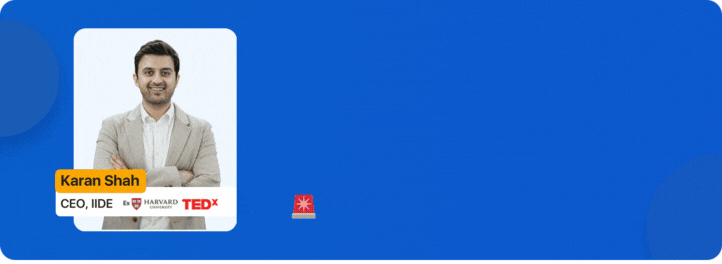
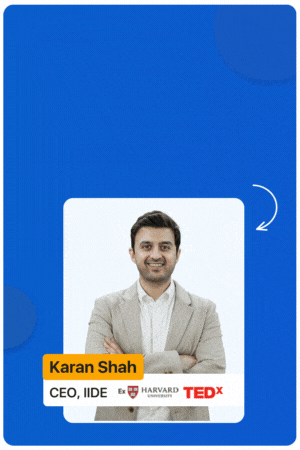
Flipkart Business Model: Revenue Model
The Flipkart revenue model primarily relies on sales commissions from sellers on its platform. The company also generates revenue through advertising services, subscription fees for Flipkart Plus, and logistics services provided by Ekart, its logistics arm.
In 2022, Flipkart reported revenue of approximately $5.7 billion (source: Economic Times). The diversified revenue model of Flipkart ensures financial stability and supports continuous investment in technology and market expansion.
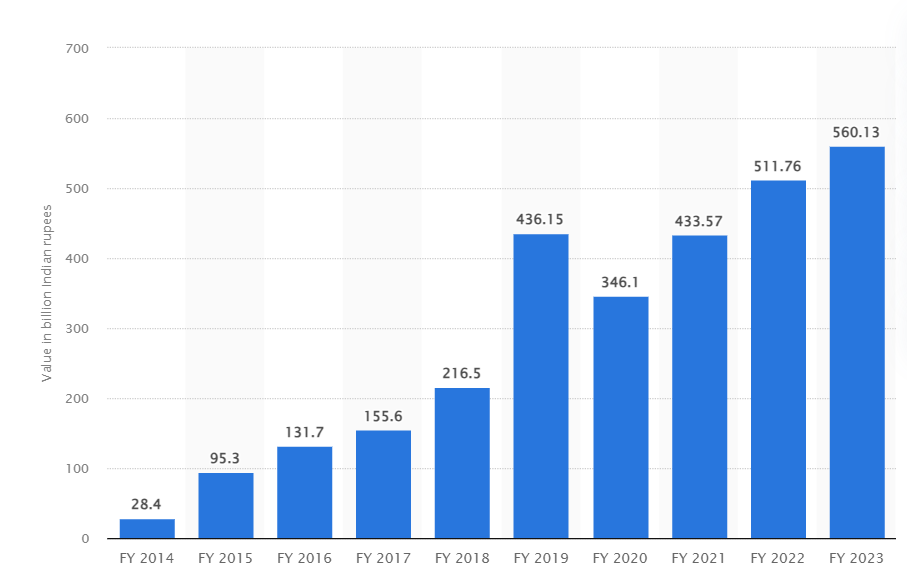
Source: statista.com
Flipkart Business Model: Marketing Strategy
Flipkart’s marketing strategy focuses on digital marketing, social media engagement, and seasonal sales events like the Big Billion Days. The brand uses targeted advertising, influencer partnerships, and customer loyalty programmes to build brand awareness and drive sales.
Flipkart knows the importance of being seen. They spend a lot of effort on digital marketing across various online channels, both paid ads and free promotions. This makes sense, considering India’s recent explosion in internet usage.
Flipkart has established itself as a reliable online shopping destination in India. When people think of buying something online, Flipkart is a top choice.
Flipkart doesn’t just want one-time customers – they want loyal fans. This case study will explore the specific digital marketing tools Flipkart uses to achieve this goal, like turning those first-time buyers into repeat customers who keep coming back for more.
The digital marketing landscape is constantly evolving, offering exciting opportunities for those who want to make a difference. Are you ready to learn the skills and strategies that will propel your career in this dynamic field?
Enrol in our PG in Digital Marketing programme and gain skills to thrive in your career.
But if you’re skeptical about it then you can always sign up for our free digital marketing certification, see how things work in the background and then make an informed decision if you want to pursue digital marketing for full-time.
Flipkart Case Study: Collaboration and Celebrity Marketing
Flipkart is well-known for its collaborations. Flipkart leverages the power of celebrity endorsements! They’ve partnered with major Bollywood stars like Ranbir Kapoor, Alia Bhatt, and others to promote their brand and services in commercials and digital campaigns.
The most remarkable collaboration ‘IndiaKaFashionCapital’ is done with Alia Bhatt and Ranbir Kapoor. Under this campaign, the company encourages fashion enthusiasts from the entire country to advance their style with the newest trends from Flipkart.

Source: Google
Through the procedure of a meaningful media mix, via a styled fashion quotient and targeted communication concerning their consumers, Flipkart Fashion’s brand ambassadors, Alia and Ranbir, update the public regarding constantly being ahead in their style game by ‘Wearing The Next.’
The pair were seen in a diversity of engaging and interactive formats, ranging from short digital content to traditional TVCs talking about the advantages of shopping on Flipkart Fashion. Seeing such familiar faces endorsing Flipkart builds trust and awareness.
Flipkart Case Study: Social Media Strategy
Flipkart is extremely much more active on all social media platforms. As of 2024, Flipkart has,
- 2.9 Million Followers on X (Formerly Known as Twitter)
- 4.4 Million Followers on Instagram
- 10 Million Followers on Meta (Formerly Known as Facebook)
Flipkart’s social media strategy is a masterclass in audience engagement. If you’re looking to promote your e-commerce business and build strong customer relationships, you can learn valuable lessons from their approach.
However, you don’t need to be a giant like Flipkart to succeed. For those interested in pursuing a career in this exciting field, this free Instagram marketing course can equip you with the skills to build a strong digital presence and achieve your marketing goals.
Flipkart Case Study: Youtube Marketing
Flipkart’s got the gram game on point! They’ve got dedicated accounts for all your shopping needs, from the latest tech gadgets to trendy clothes. But for businesses of all stripes, whether they’re selling products or services, the real stars of the show are the customer reviews. It’s all about building trust and showing potential customers that others have had a positive experience. So, the next time you’re browsing Flipkart on Instagram, keep an eye out for those glowing reviews!
Flipkart has certain special attention to that by having a separate account that just directs to Customer Story named FlipkartStories.
With YouTube being achieved as the world’s second-largest search engine (behind Google) Flipkart entirely leveraged this platform to promote its marketing campaigns. Flipkart initiated a targeted marketing campaign for the fashion segment known as ‘India ka Fashion Capital’, aimed at featuring video ads on YouTube as the majority of their audience is present there.
Google was also capable of estimating the effect of traditional media vs digital policies, which made clear that the brand had an existing all on digital platforms.This illustrates the business model of Flipkart and its emphasis on digital marketing strategies.
Flipkart Case Study: Twitter Strategy Campaign
You’ll be shocked to realise that out of all the platforms Flipkart assigns special attention to Twitter. Flipkart is well-known to follow a fixed pattern for communication for all the platforms but once it comes to Twitter, they maintain running mini-campaigns from time to time like #SareeTwitter.
Apart from fun campaigns, Flipkart’s business model also includes a 24*7 accessible Customer Support System on Twitter where they address complaints and queries of their consumers. Subsequently, if you face a problem with Flipkart, you know what to do.
Flipkart Case Study: Remarketing
Remarketing is any marketing and advertising strategy that re-establishes links with potential purchasers after they visit the store’s website. Remarketing survived before the arrival of the Internet, yet its procedure has moved from offline to online and it is extremely beneficial and inbound.
Generally, visitors visit the online portals and leave the site without finalising the purchase. Remarketing is performed by showing ads to such potential consumers across digital platforms advising them to convert.
Flipkart Case Study: Kidults
As mentioned earlier, Flipkart strategically targets younger audiences through engaging YouTube and social media ads featuring kids. This playful and effective campaign ran successfully until late 2019.
Inspired by Flipkart’s digital marketing prowess and eager to launch your own career in this dynamic field? Don’t let a busy schedule hold you back! Our convenient online digital marketing certification course allows you to learn at your own pace, seamlessly fitting into your daily life.
Craving further exploration? Dive deeper into the world of digital marketing at this institute of digital marketing that offer a variety of courses designed to equip you with the skills and knowledge to achieve your digital marketing dreams.
Business Model Of Flipkart: Value Proposition
Flipkart’s business model lies in offering a wide range of products at competitive prices, coupled with a seamless shopping experience. The brand’s commitment to customer satisfaction, quick delivery, and reliable customer service enhances its appeal.
Flipkart’s investment in technology, such as AI-driven recommendations and a user-friendly app, further strengthens its value proposition. The value proposition of Flipkart ensures high customer satisfaction and loyalty.
Business Model Of Flipkart: Operational Model
The Flipkart business model integrates a robust supply chain, efficient logistics, and advanced technology. The company operates a network of warehouses and fulfilment centres across India, ensuring quick and reliable delivery.
Ekart, Flipkart’s logistics arm, plays a crucial role in managing deliveries and returns. Flipkart’s use of AI and machine learning for inventory management, demand forecasting, and personalisation enhances operational efficiency and customer experience.
Business Model Of Flipkart: Strategic Alliances & Partnerships
Flipkart forms strategic alliances with suppliers, technology providers, and financial institutions to enhance its operations and product offerings. Partnerships with brands and exclusive product launches, such as those with Samsung and Motorola, attract customers.
Collaborations with payment providers like PhonePe, a subsidiary of Flipkart, facilitate seamless transactions. These strategic partnerships support Flipkart’s operational efficiency and market expansion, aligning with the business model of Flipkart.
Business Model of Flipkart: Technological Innovations
Flipkart invests heavily in technology to enhance its platform capabilities and customer experience. The company uses AI and machine learning for personalised recommendations, fraud detection, and customer support.
Innovations like voice-assisted shopping augmented reality for product previews, and AI-driven chatbots reflect Flipkart’s commitment to leveraging technology for convenience and engagement. The focus on technological advancements ensures Flipkart’s continuous improvement and market differentiation, aligning with the business model of Flipkart.
Business Model of Flipkart: Corporate Social Responsibility (CSR)
Flipkart’s CSR initiatives focus on education, community development, and sustainability. The company’s Flipkart Foundation supports education programmes, skill development, and women empowerment. Flipkart also promotes sustainability through initiatives like reducing plastic usage, promoting eco-friendly packaging, and energy-efficient operations. Community engagement programmes, such as disaster relief and rural development, highlight Flipkart’s commitment to social responsibility.
Case Study of Flipkart: Top Competitors Analysis
- Amazon: The closest competitor of Flipkart is no doubt Amazon. Jeff Bezos launched Amazon in 1994, starting small as an online bookstore. They prioritised customer satisfaction and offered a huge variety of products. Amazon’s reach extends beyond online shopping – they’re also a cloud computing leader with Amazon Web Services. In short, Amazon revolutionised online shopping and continues to innovate across industries.
- Myntra: Founded in 2007, Myntra began with personalised gifts but swiftly transformed into India’s leading fashion e-commerce platform. They offer a curated selection of fashion products, prioritize a smooth shopping experience, and cater to diverse Indian tastes. Myntra’s impact on Indian fashion has been significant, making it accessible and shifting shopping habits.
- Meesho: Founded in 2015, Meesho was the first Indian brand to empower everyday Indians to become resellers by connecting them with manufacturers. These resellers then use social media platforms like WhatsApp and Facebook to sell a wide range of products. This focus on social commerce and accessibility has made Meesho a leader in its field, boosting entrepreneurship and revolutionizing social shopping in India.
- AJIO: Launched by Reliance Retail in 2016, AJIO targets fashion-conscious Indian consumers. They offer a curated selection of premium fashion apparel, footwear, and accessories from renowned Indian and international brands. AJIO prioritises a trendy and stylish shopping experience, complemented by features like easy returns and convenient payment options.
- TATA CLiQ: Tata Cliq was established by the Tata Group in 2016 which caters to the particular Indian shopper. They offer a curated selection of premium fashion, lifestyle products, and electronics from trusted national and international brands. Tata Cliq emphasises a seamless shopping experience with features like free shipping, easy returns, and secure payment options.
Learn From Asia’s #1
Digital Marketing Institute
AI-Based Curriculum
Dive in to the future with the latest AI tools
Placement at top brands and agencies


 & more...
& more...

Conclusion
Being India’s largest e-commerce platform it operates on a B2C business model by providing services related to the online book store and some other products. After it expanded into other sectors and became an e-commerce company, Flipkart shifted to a business-to-consumer model. Flipkart’s business model joins dealers and purchasers on its platform.
At present, it advertises its entirety from furniture, groceries, books electronics, and more items. Flipkart has succeeded in increasing to the highest spots in the e-commerce industry in India despite standing in competition with alike well-known firms such as Amazon.
The Business Model of Flipkart improved the business in its development and progress. Flipkart remains the giant in the market by using its marketing strategy therefore Flipkart has been generating profits in recent years especially due to its investments in technology.
If you are a resident of any of these places then check out the digital marketing courses in navi mumbai, digital marketing courses in faridabad and digital marketing courses in bangalore.
Or, if you want to take a step forward then consider reading our digital marketing blogs to find which of the listed institutes would be the best for you.
Thank you for reading this article! If you wish to add to the discussion, write your thoughts in the comment section below.
FAQs About Business Model Of Flipkart
Q1. What is Flipkart's business model?
The Flipkart business model focuses on offering a wide range of products through an online marketplace, generating revenue from sales commissions, advertising, and logistics services.
Q2. How does Flipkart make money?
Flipkart makes money through commissions from sellers, advertising services, subscription fees for Flipkart Plus, and logistics services provided by Ekart.
Q3. What are Flipkart’s main products?
Flipkart’s main products include electronics, fashion, home essentials, groceries, and more.
Q4. Who are Flipkart’s competitors?
Flipkart’s top competitors include Amazon India, Snapdeal, Myntra, Reliance JioMart, and Tata CLiQ.
Q5. How does Flipkart use technology?
Flipkart uses AI, machine learning, and data analytics for personalised recommendations, inventory management, and enhancing customer experience.
Q6. What is the target audience of Flipkart?
The Flipkart target audience comprises tech-savvy millennials, middle-class families, and urban professionals seeking convenience and value.
Q7. What is Flipkart’s market share in e-commerce?
Flipkart holds approximately 31.9% of the Indian e-commerce market share.
Q8. What are Flipkart’s CSR initiatives?
Flipkart’s CSR initiatives focus on education, community development, and sustainability through the Flipkart Foundation and various environmental programmes.
Q9. What is Flipkart’s value proposition?
Flipkart’s value proposition is offering a wide range of products at competitive prices, with a seamless shopping experience and reliable customer service.
Q10. How does Flipkart market its products?
Flipkart markets its products through digital marketing, social media engagement, seasonal sales events, and targeted advertising.








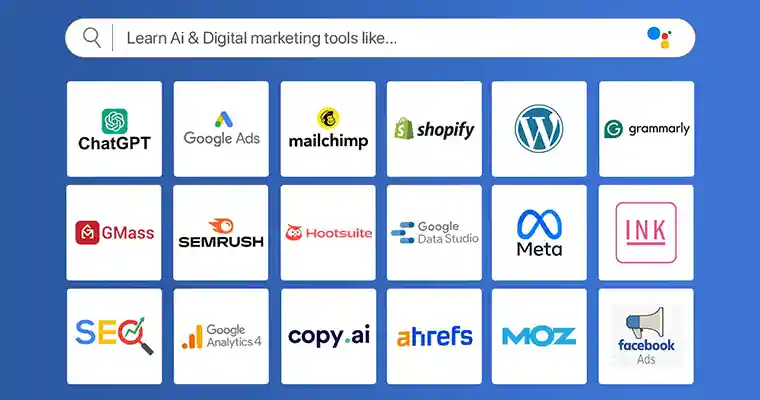



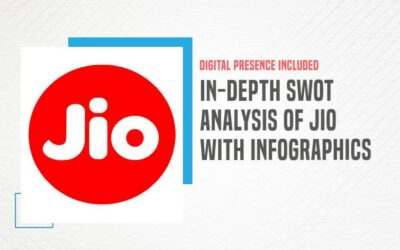
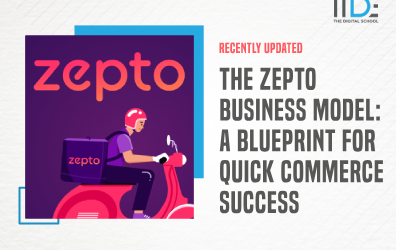
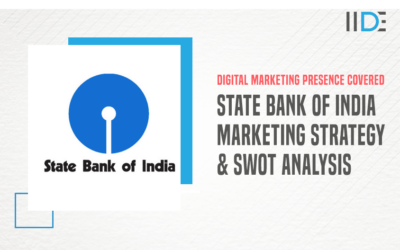
Getting to know the Business Model of Flipkart was made more interesting via this blog, well-written.